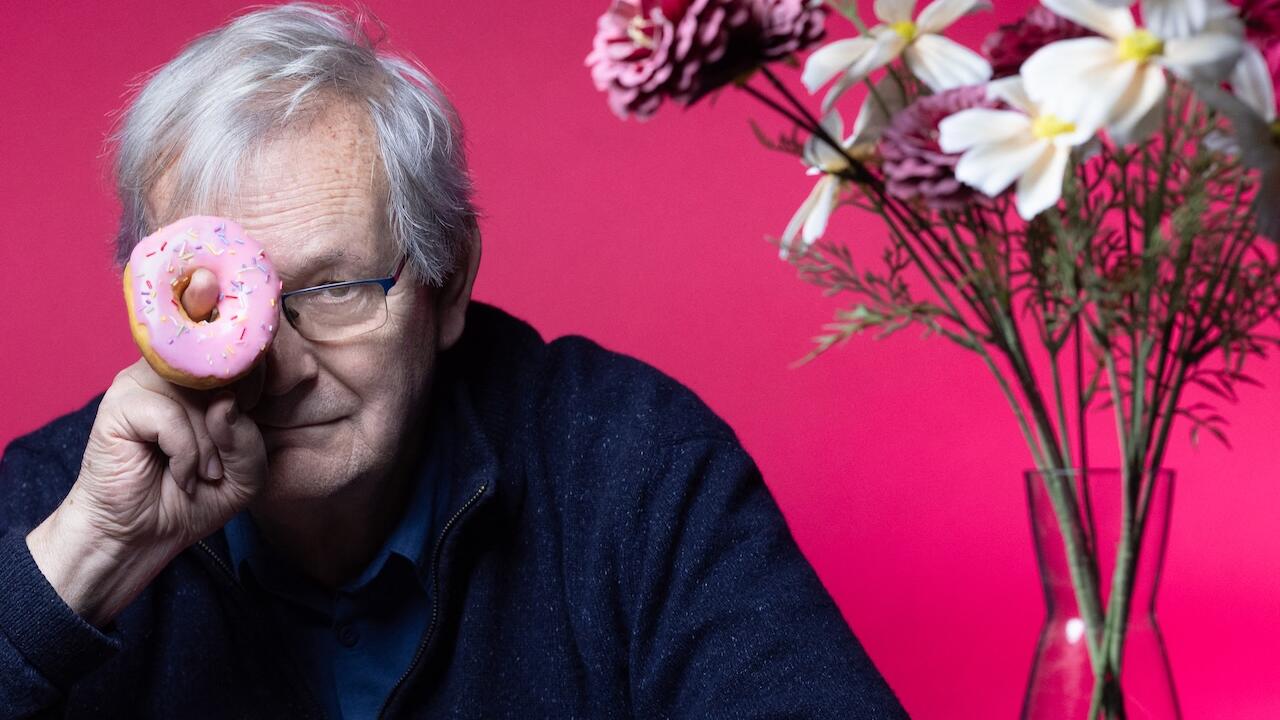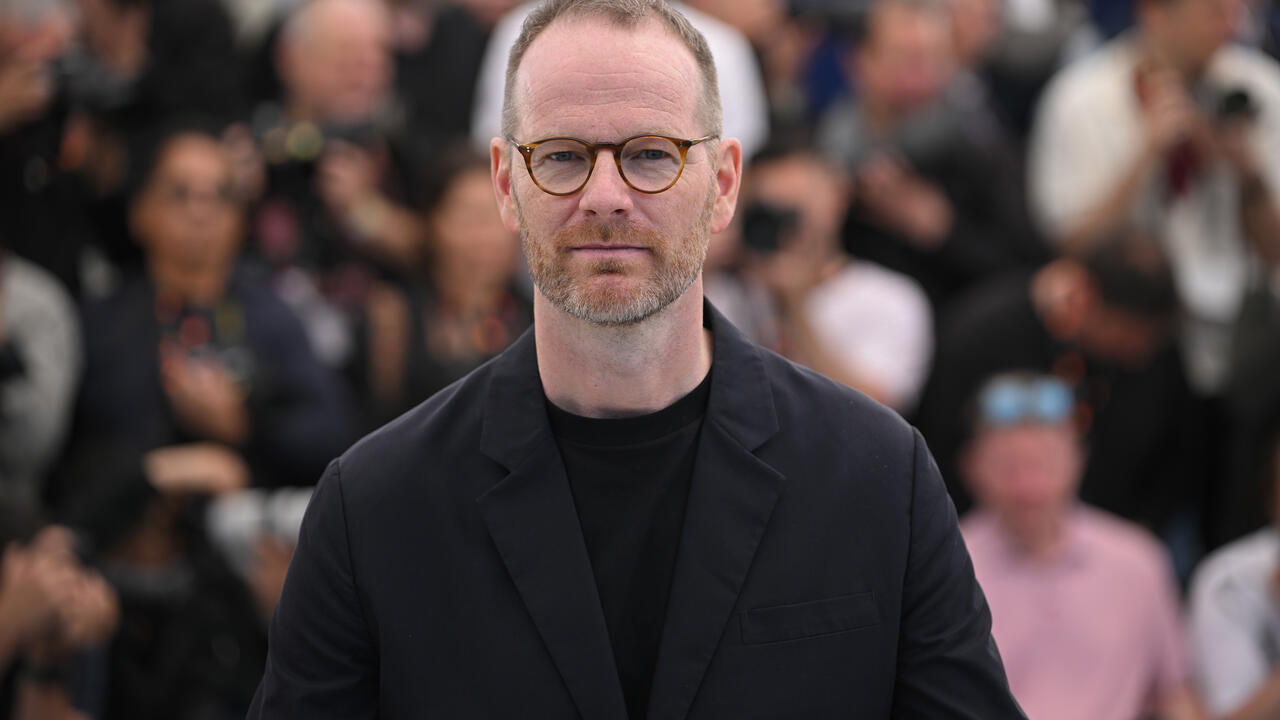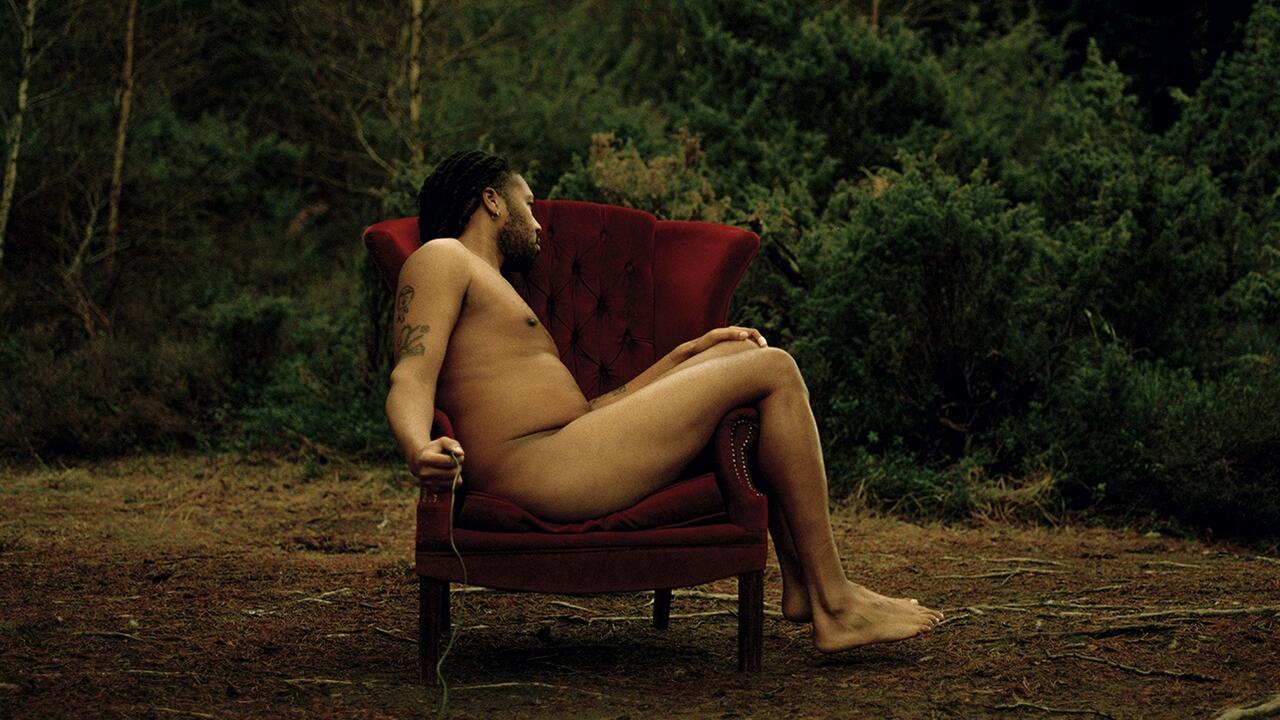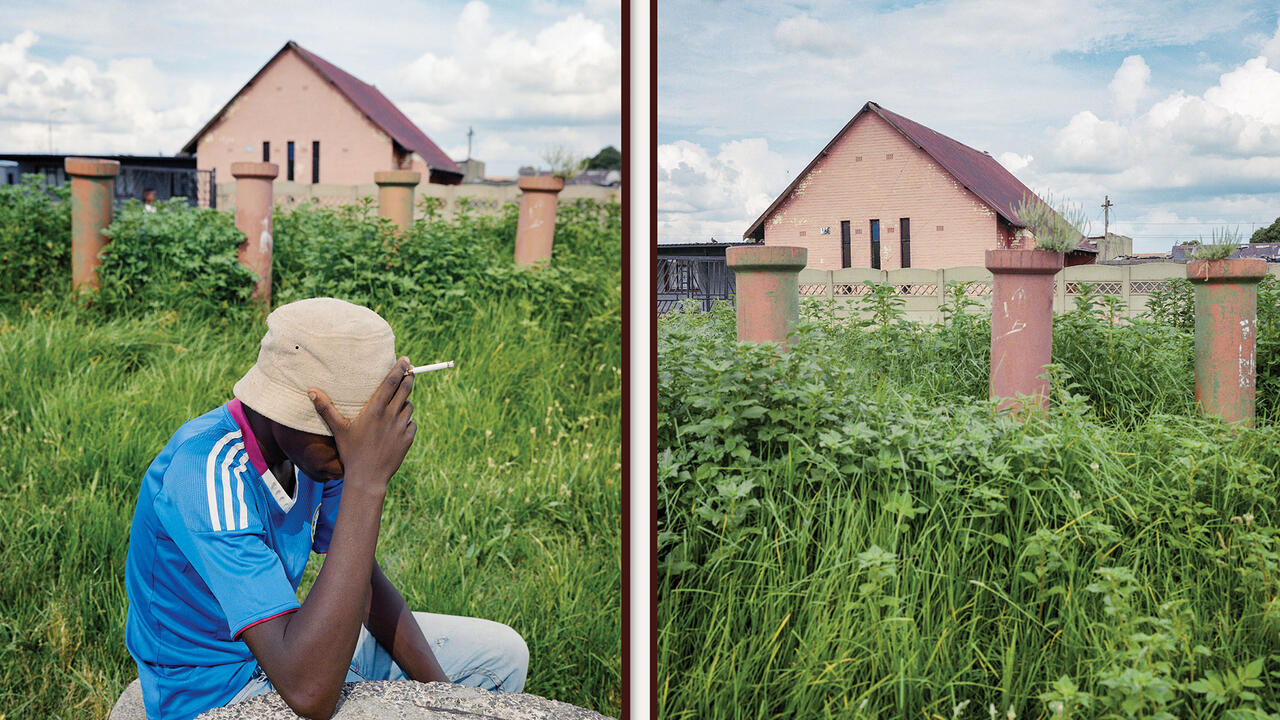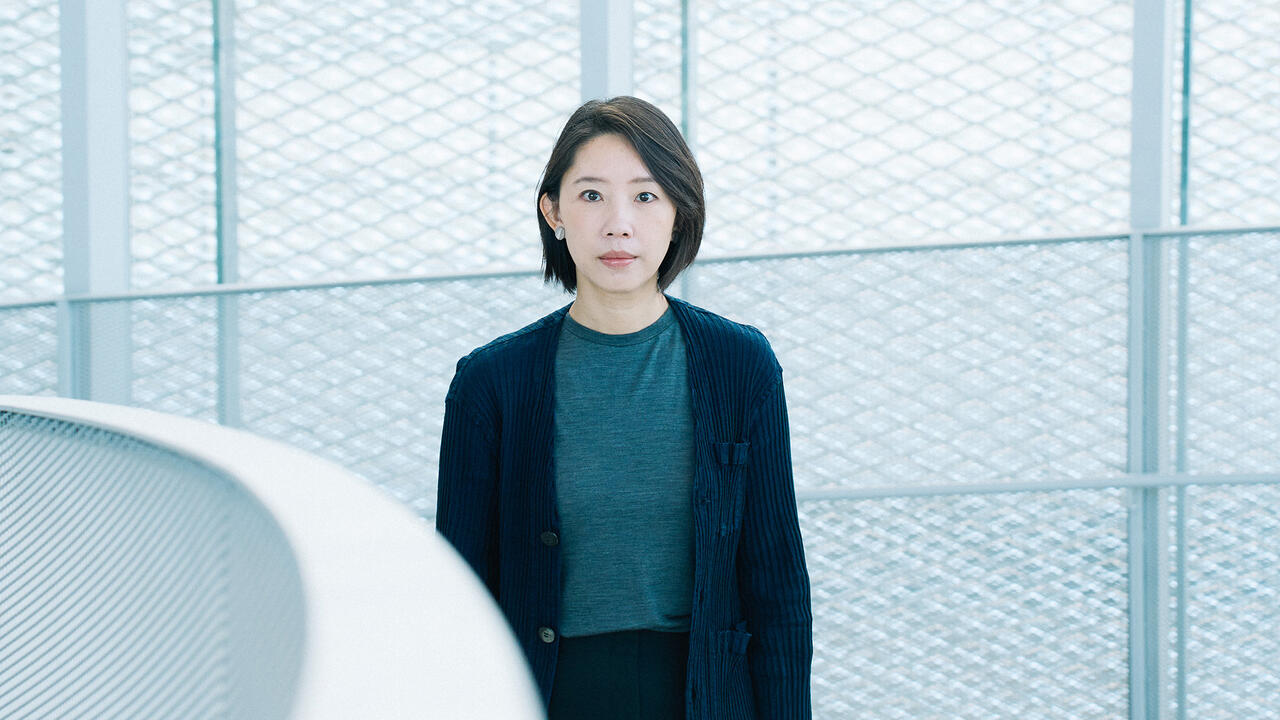Who Would Believe It?
Film director Nicolas Roeg talks to his friend, the artist John Stezaker, about collage, editing and memory, and film’s ability to ‘trap shadows’
Film director Nicolas Roeg talks to his friend, the artist John Stezaker, about collage, editing and memory, and film’s ability to ‘trap shadows’

Nicolas Roeg is one of the most inventive and influential film directors of the last century. In 1962, he worked as a second-unit cinematographer on David Lean’s Lawrence of Arabia; in 1964, as cinematographer on Roger Corman’s The Masque of the Red Death; and, in 1966, on François Truffaut’s Fahrenheit 451. Since then, Roeg has directed 15 feature films, including Performance (co-directed with Donald Cammell, 1970), Don’t Look Now (1973), The Man Who Fell to Earth (1976) and Bad Timing (1980). His most recent film, Puffball, was released in 2007. A happy rumour has it that he is working on a new movie.
This year, Roeg turns 85. In his new memoir, The World is Ever Changing (Faber & Faber), he reflects on over half a century of filmmaking, insisting that, as memory has ‘no continuity of time’, the chapters can be read in any order. The book’s title is a line from The Man Who Fell to Earth, in which David Bowie, playing a melancholy alien, murmurs: ‘The world is ever changing, Mr Farnsworth, like the universe.’

John Stezaker Your films are never about what they seem to be about at first. Don’t Look Now fascinates me for reasons I can’t explain. It’s both mainstream and an elegy to film noir, and I love it for that. And Insignificance (1985) initially seems to be about a preposterous meeting between Albert Einstein and Marilyn Monroe, but some of its scenes don’t seem to have anything to do with the main story. For example, Joe DiMaggio – what happens to him? He’s wandering around, trying to catch up with things, but the plot is always just one step ahead of him. In some ways, he is narratively superfluous and yet his inability to get into the plot makes him central: he represents the viewer, or perhaps the director.
Nicolas Roeg There’s a marvellous line in John Huston’s The Treasure of the Sierra Madre (1948): ‘You don’t see the gold beneath your very feet.’ The prospectors, played by Humphrey Bogart and Tim Holt, don’t think they’ve found any gold, but when their much older companion dances at the foot of the mountains they glimpse it in the sand under his feet. It’s like a premise to the film. When I was very young, I began to suspect that what I was actually feeling I shouldn’t be feeling. I became more conscious of my own emotions and reactions, and was sometimes ashamed of them, because they seemed to be stupid. I lived with that until I realized that the only reason I thought certain things were stupid was because they were unfamiliar to me and they weren’t readily recognized, and perhaps that was a gift. It also meant you might do something stupid in terms of expressing yourself.
JS Your films always contain these climatic moments, with no regret afterwards. In mainstream cinema, any loose narrative ends are neatly tied up, although perhaps if they’re trying to be avant-garde they might leave one small question open, just to encourage a sequel.
NR Very true.
JS Whereas yours have so many loose ends that you’d need a hundred sequels to begin to work them out. On the other hand, you could say that each film is a sequel to the one before it. For example, the railway in TheMan Who Fell to Earth becomes the model railway in Track29 (1988).
[Missing Image]
NR That’s something I was thinking about the other day; I like timelessness. You know, our idea of the future and the past is quite a recent one. We’re now advancing at great speed in terms of understanding our tiny microcosm of the universe, but doors are still being opened to us the whole time. We’re living in an era that’s very exciting because the pace of change is extraordinary. An era used to cover about 100 or 150 years, or three monarchical reigns, but now it only lasts about a decade and then you’re completely out of date.
JS Your films are like dreams. Cinema for you seems to occupy dreamtime. You allow things to fracture and separate into multiple realities, yet you use mainstream narrative strategies to draw people in. It’s only after a while that it becomes clear something weird is happening. Unlike directors such as Ken Russell or Derek Jarman – the fantasy people – you’re exploring the absolute hyperreality of cinema, so the experience for the viewer is almost hallucinatory.
NR I want to tell each person who sees my films something different: everyone gets a different whisper in their eyes and ears. I want to embrace people, whatever that means. Yet, I realize that there may only be three viewers who understand what the hell I’m talking about. Then a little time goes by, and perhaps those three people tell another three, and then nine people, and then there are 12 people, and then they say, ‘Let’s have another look at this.’
JS I think your films are very timely. I just screened Track29 to some students at Saint Martins and they really responded to your combination of naturalism and hallucinatory un-reality. You were talking about resisting universality but, in a sense, all your films have a universal story. There’s always a climactic moment about three-quarters of the way through the film, then there’s a kind of weird aftermath effect that leaves the audience devastated. You know that experience of drinking heavily and waking up in the morning thinking, ‘What have I done?’ There’s always one of those moments in your films.
NR I suppose it’s because film has such an ability to trap shadows; the film is much more in charge of the process than anybody imposing anything on it; it’s a total mystery. When something innovative takes place in the arts or sciences, initially there’s a sense that the person doing it simply doesn’t know how to do it ‘properly’. But what is properly? Things that adhere to the conventional formula are much more inviting than those which try to push that formula in another direction, or invert it or make it more personal. I prefer the artist who doesn’t respect convention. I love the story of Picasso’s response to a Nazi who looked dismissively at his painting Guernica (1937) and asked him: ‘Did you do this?’ To which Picasso apparently replied: ‘No, you did.’

It’s extraordinary, the sensation of: ‘Who would have believed that?’ When I was about 18, I was in the army, and I was invited to a rather grand wedding. The bride went to change and didn’t come back. She saw this man, she didn’t know him – he was just one of the guests – but they looked at each other, and she ran off with him. Fantastic! It’s still in my mind; I could direct that scene exactly as it was. I can still see myself sitting at the wedding and the cake and the person I went with and where we went afterwards. I’ve got very little time for most memories, but the ones I do have are sharp and clear. They have a grading that makes me think: ‘Well, I’ll be damned. Has this all been a dream?’
JS In a way, cinema is like a cleansing mechanism. Normally you go to see a film, you immerse yourself in this other world and you come out feeling better, having vicariously experienced the excesses and extremes of the tragic mode and all the rest of it; everything is tied up nicely and you carry on with your life. Your films leave a kind of weird aftertaste that has something to do with something remembered. I recently saw Castaway (1986) for the first time and I came away from it with the image of Oliver Reed turning a pebble in his mouth.
NR Where did you see it?
JS It’s really hard to get hold of; I saw it on a video, I think it was a pirate copy. Very poor quality.
NR Fantastic! Oliver Reed was so good in it. He was such a wonderfully nice person. He had great compassion and sympathy, as well as being an extraordinary artist. He was an original, and he stayed original. Nobody could imitate him. I’ve never seen a painting that expresses anything of what I felt about him and what he projected.
JS I feel that all cinema is about forgetting, but you interrupt the mechanism in some way in order to allow you to remember. It’s always about this effort to remember the details, like the red raincoat in Don’t Look Now – sensations that are profoundly visual. The way you seem to create this is by cancelling, or estranging, the narrative flow. Like the mirror sequence in Eureka (1983) when you’re not sure whether Rutger Hauer’s character is the killer or not, and he confesses but not in words – it’s done visually. The image tells you the truth, or seems to tell you the truth, but it is often somehow at odds with what you are being told narratively.
NR I love hearing you say that because I don’t exactly plan anything; I can’t look ahead, I always find myself excited by the surprise. Somehow it makes it more human, more real, more truthful when I’m surprised by something in the actor’s behaviour, or some reaction that isn’t in the script. It’s like a mystical tip-off.
[Missing Image]
It’s not very British to embrace a change in behaviour or manners or thoughts – to run off with the bride. It’s very much an American attitude. We all have those terrible moments in life when we regret not having done something and think: ‘I was so stupid.’
JS There’s a line in T.S. Eliot’s Four Quartets (1945) that really reminds me of your work: ‘Footfalls echo in the memory down the passage which we did not take.’ That’s the atmosphere of Don’t Look Now and Track 29. You use cinema to add to the real; cinema is about a kind of transparency, but you make it even more transparent and, in so doing, you create this mystery.
NR Life is a mystery. What fascinates me is that criticisms of Puffball (2007) opened a door of understanding in me, not about changing anything, but of not understanding it. I guess the difference between pretentious and corny is very weird, and to my critics I’m pretentious. But the mystery of life is exciting to me because we know nothing about it.
JS This is why, if I may say so, people find your films difficult: they’re not prepared for you; there’s something very uncomfortable in everything you do. That’s part of the art and why it’s great. But people can react to that and say: ‘I don’t want to be uncomfortable. I don’t want to see Oliver Reed all covered in mud and Amanda Donohoe in the nude.’ You know, it might irritate some people, but it stays with them, whereas other cinema doesn’t.
NR That covers it all. We live in mysterious times. What I love about your work is that it epitomises everything internal in all of us, this very strange thing. It’s the finest illustration of the mixture in all of us of man and woman. Your pictures visually tell the state of mankind – the actual state, not the good or bad, but the actual.
JS That’s the point, isn’t it? We’re all genetically spliced in a sense, aren’t we?
NR That’s who we are – Adam and Eve. I mean, it’s the best illustration; the old people and the young people, different marriages, different ages. One of the reasons why I’m doing this interview is because I admire your pictures – beyond admire; they opened a door for me.
JS That’s so kind, thank you. But to return to the Four Quartets, which explore the idea that you can only stop time within time; I was thinking of this in relation to the medium of cinema. ‘Only through time, time is conquered’ could be your motto, perhaps. ‘Before the beginning and after the end. And all is always now. Words strain, crack and sometimes break, under the burden.’ It makes me think of Walkabout (1971), and of the essence of your films. The narrative breaks up, it does all sorts of strange things. It’s before the beginning and after the end. There’s a kind of reverberation with which you hold an image before it flows away. All cinema is a flowing away of ideas, but you’ve found a way of subverting the narrative – words strain, crack, break, whatever is happening. That’s what you do.

NR I recognize what you’re saying.
JS In Track 29, Gary Oldman’s character, Martin, looks like a kind of British fashion victim stranded in middle America, but at the end you realize that he’s a blind man, Oedipus, and the whole film has been a sort of Oedipal drama. But he’s also like the alien, the David Bowie character in The Man Who Fell to Earth, because he’s come from nowhere. I can’t help feeling that these outsiders are you: they’re the film director; they come into the world and, almost without knowing what they’re doing, they make everything happen around them.
NR They’re about all of us. We are all private people. We’re all on our own. When people say, ‘Oh, someone has seen something that wasn’t there,’ it’s absolutely true. It can’t get more pure than that. The atmosphere I want to get across is hope. It’s an extraordinary thing; we make ourselves happy or we become happy through a situation and the person who was in it. It’s what connects us to people’s lives, their happiness, unhappiness or fear. Everything around us is making it up in microscopic ways.
Certainly, when a situation becomes more forceful we can be swept up with it, or revolt against it. We have to be careful or else we’re swept to even greater heights. Perhaps this is going too far in terms of what it is to be alive, but for me it’s also connected to the idea that toys which have been kept in their original boxes, unplayed with, are the most valuable. Yet that seems so sad, since it means whoever owned the toys didn’t play with them. I loved it when my boys played with their things. I have kept them in their broken state and they take me back to the time when they got broken.
JS When you were making Track29 your children would have been playing with trains. In a way, you made a child’s total fantasy; you aligned yourself with what Gaston Bachelard calls ‘the magnifying gaze of childhood’. You put the camera where the child’s gaze was and made it into this entire cinematic spectacle; the visionary scene of the miniature railway is just so amazing to me, as is the scene where Oldman smashes it to pieces.
NR The crew didn’t want the railway to be broken; they couldn’t watch.
JS Recently, there was an exhibition of Ice Age art at the British Museum. One of the most extraordinary things about it was that, although the artists must have spent thousands of hours creating these tiny little figurines, almost all of them were smashed very soon after they were made. Why do we have this urge to destroy something the moment we discover it?
NR I don’t know.
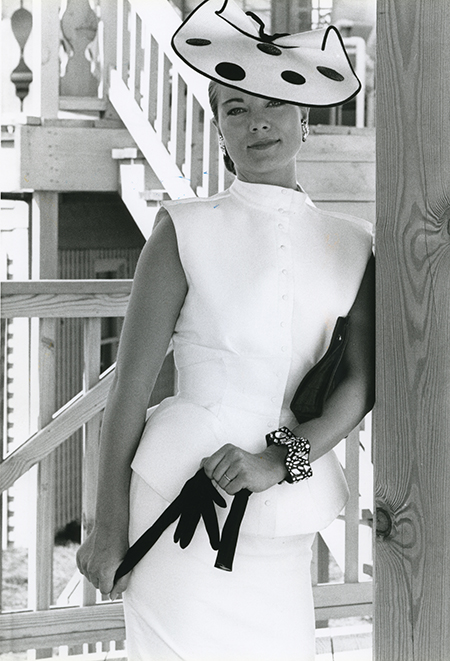
JS It’s just what a child would do.
NR That’s true. It’s marvellous, the belief in sleeping with a favourite little animal or something.
JS All the characters in Track 29 are children in a way, aren’t they? A beautiful touch in that film, which is reminiscent of Reed’s pebble in Castaway, is the orthodontic brace that allowed Theresa Russell’s character to become a woman at the end.
NR The wife of the person we were renting the house from for the filming turned up. She was an air hostess with these amazing teeth, and I thought: ‘This is fantastic. I must have the braces.’ So they came with the house.
JS A hundred years ago, when they began to use radium for the first time in X-rays, they thought they would be able to see through everything; they were going to render the world completely transparent just like an imaging machine. Of course, cinema was central to that project, because it offered a way of visualizing it. Ultimately, though, when you probe you find that – just as you put those scans on top of real people in Puffball – it’s like peeling away one layer only to find another underneath.
NR The X-ray machine is the most extraordinary thing. Yet, if you dissect it, it’s not very mysterious at all. It’s fantastic.
JS X-ray is the most underestimated medium. I mean, enough books to fill a library have been written about the impact of photography or film on our conscious, but X-ray really touches our unconscious. We used to belong to the period of enlightenment, and now perhaps we belong to the period of endarkening, where increasing knowledge only deepens the mystery. I think your films are pivotal to this.
NR These discoveries make you realize how little we know. From the first time I saw your collages, I began to think completely differently, as if they offer reasonable proof that men and women were born together and had broken apart.
[Missing Image]
JS Yes, we have that myth, don’t we? It’s somehow embedded somewhere in us.
NR It’s in your illustrations.
JS Well no, it’s in our parentage. We are the product of it but we can’t grasp it in any way. Recently, I was giving a lecture on my work in Leeds and one of the students asked me why I like old images. I went into a long discourse about obsolescence and so on, and the Professor, Griselda Pollock, shouted: ‘Nonsense, John, it’s not old images in general, it’s images from 1940 in particular. What you’re trying to do is marry your mother and your father.’ She didn’t know that only two days earlier I had visited my mother and she had given me my father’s passport from the 1940s. In those days, women were added to their husband’s passports once they got married, so when I opened it I found these two pictures I’d never seen before of my mother and father, a few years before I was born, on opposite pages of the passport. My mother gave me the passport as part of a process of dispossession that she is going through in her old age. I receive gifts like this on every visit now. But this one was particularly emotional. I could see myself in the combination of images. They looked as if they were waiting to be spliced into one of my collages. So, in a sense, Griselda hit the nail right on the head. In your films, too, women are central; whether it’s Julie Christie, Theresa Russell or Jenny Agutter, you love them, you adore them. As viewers, we fall in love with each one of those characters every time we see them – not because we know them, but because we can’t know them. They are completely untouchable.
NR They belong to me in a different way. They belong to me in a way that they don’t know. ‘Belong’ is not the best word to use, but the fact of them is inspiring.
JS They’re muses. You’re an old-fashioned artist with a muse.









